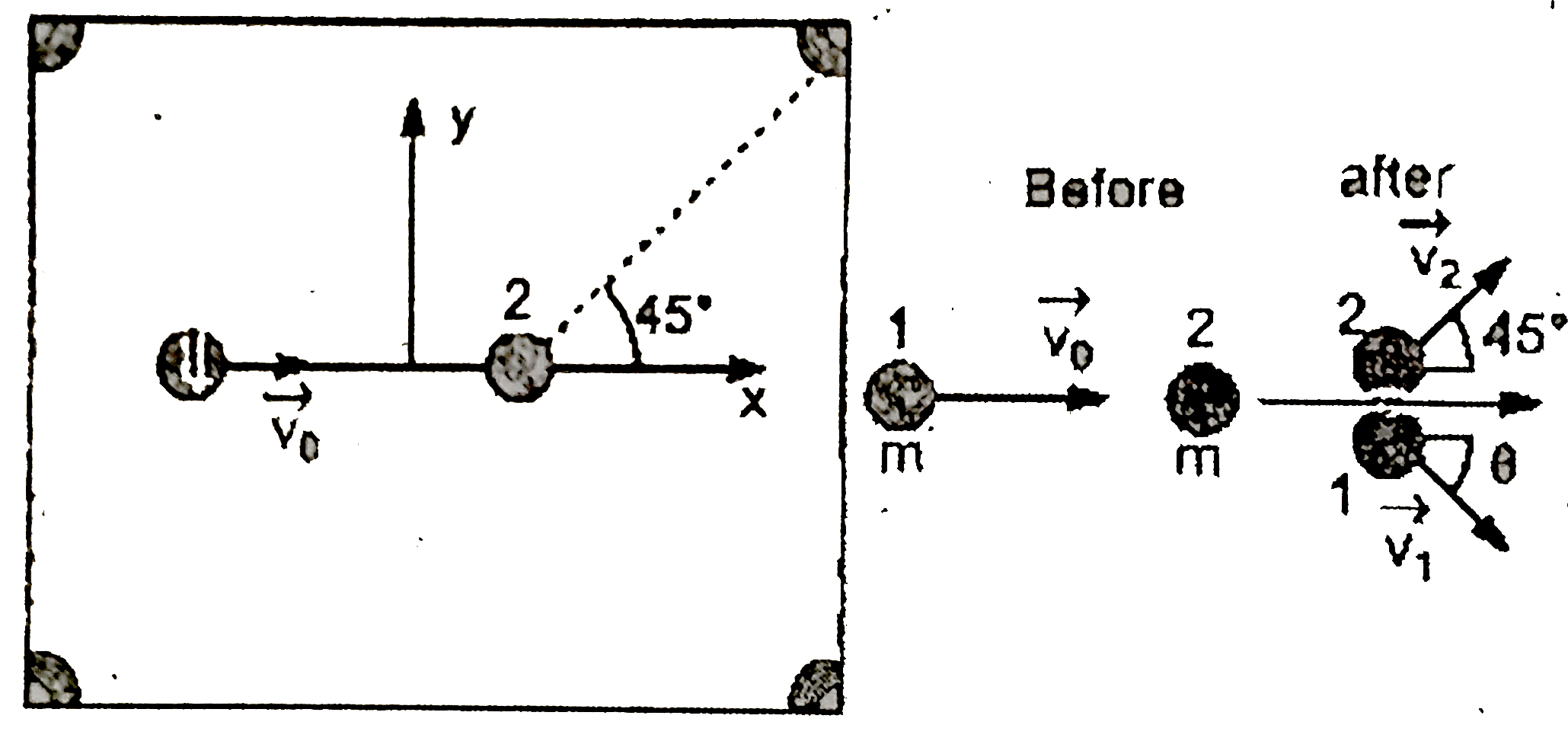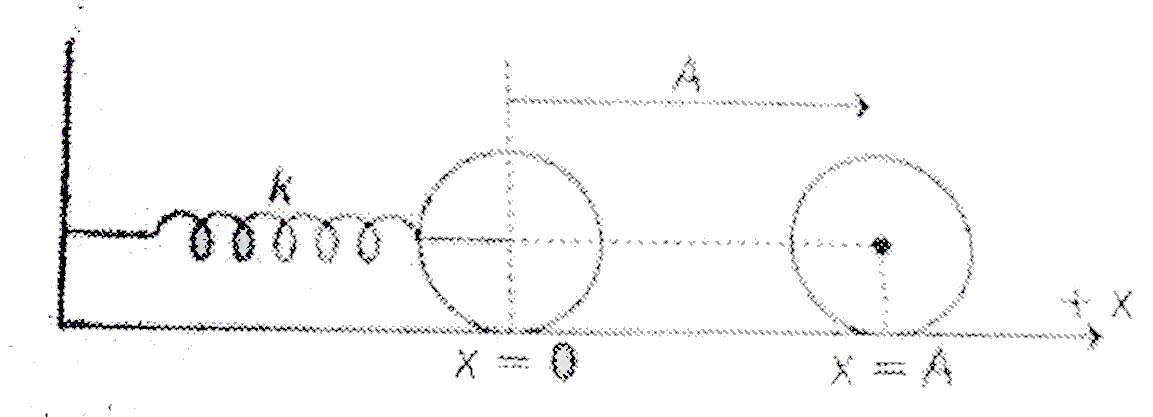A large flat board is lying on a smooth ground. A disc of mass m = 2 kg is kept on the board. The coefficient of friction between the disc and the board is m = 0.2 . The disc and the board are moved with velocity →u=2ˆims−1 and →V=2ˆJms−1 respectively [in reference frame of the ground]. Calculate the power of the external force applied on the disc and the force applied on the board. At what rate heat is being dissipated due to friction between the board and the disc? [g=10ms2]
![A large flat board is lying on a smooth ground. A disc of mass m = 2 kg is kept on the board. The coefficient of friction between the disc and the board is m = 0.2 . The disc and the board are moved with velocity vec(u)=2hatims^(-1) and vec(V)=2hatJ ms^(-1) respectively [in reference frame of the ground]. Calculate the power of the external force applied on the disc and the force applied on the board. At what rate heat is being dissipated due to friction between the board and the disc? [g = 10 ms^(2)]](https://d10lpgp6xz60nq.cloudfront.net/physics_images/IJA_PHY_V01_C04_E01_045_Q01.png)
The correct Answer is:4√2W,4√2W;8√2w
Step by step video, text & image solution for A large flat board is lying on a smooth ground. A disc of mass m = 2 kg is kept on the board. The coefficient of friction between the disc and the board is m = 0.2 . The disc and the board are moved with velocity vec(u)=2hatims^(-1) and vec(V)=2hatJ ms^(-1) respectively [in reference frame of the ground]. Calculate the power of the external force applied on the disc and the force applied on the board. At what rate heat is being dissipated due to friction between the board and the disc? [g = 10 ms^(2)] by Physics experts to help you in doubts & scoring excellent marks in Class 11 exams.
Topper's Solved these Questions
Similar Questions
A long taut string is plucked at its centre. The pulse travelling on it can be described as y(x,t)=e−(x+2t)2+e−(x−2t)2. Draw the shape of the string at time t=0, a short time after t=0 and a long time after t=0.
01:30View SolutionA disc is placed on the ground. Friction coefficient is mu . What is the minimum force required to move the disc if it is applied at the topmost point?
05:50View SolutionA disc of mass m and radius R lies flat on a smooth horizontal table. A particle of mass m, moving horizontally along the table, strikes the disc with velocity V while moving along a line at a distance (R)/(2) from the centre. Find the angular velocity acquired by the disc if the particle comes to rest after the impact.
10:45View SolutionA particle of mass m strikes elastically with a disc of radius R, with a velocity →v as shown in the figure. If the mass of the disc is equal to that of the particle and the surface of the contact is smooth, find the velocity of the disc just after the collision.
 03:25View Solution
03:25View Solutionfig 4E.43 shows two discs kept on a smooth horizonal surface . Disc 1 is projected towards disc 2 with velocity →v0 After collculate the magnitude of outgoing velocitites of disc, 1 and disc 2.
 01:05View Solution
01:05View SolutionA disc of mass 5 kg and radius 50 cm rolls on the ground at the rate of 10 ms^(-1) . Calculate the K.E. of the disc.
01:55View SolutionFigure-2.84 shows a man ofmass M standing on a board of mass m.What minimum force is required to exert on string to slide the board. The friction coefficient between board and floor is mu and there is sufficient friction between man and board so that man does not slip. [(mu(M+m)g)/(1+mu)]
03:39View SolutionA board of mass m = 1 kg lies on a table and a weight of M = 2 kg on the board. What minimum force F must be applied on the board in order to pull it out from under the road ? The coefficient of friction between board and table is mu_(2) = 0.5 : (Take g = 10 m//s^(2) )
05:08View SolutionA disc of mass m and radius R is placed over a plank of same mass m. There is sufficient friction between disc and plank to prevent slipping. A force F is applied at the centre of the disc. Acceleration of the plank is
05:08View SolutionA disc of mass m and radius R is placed over a plank of same mass m. There is sufficient friction between disc and plank to prevent slipping. A force F is applied at the centre of the disc. Force of friction between the disc and the plank is
06:28View SolutionPassage VIII A disc of mass m and radius R is attached with a spring of force contant k at its center as shown in figure. At x-0, spring is unstretched. The disc is moved to x=A and then released. There is no slipping between disc and ground. Let f be the force of friction on the disc from the ground.

f versus t (time) graph will be asView SolutionA disc of mass m and radius R is placed over placed over of mass m. There is sufficient friction between disc & plank to prevent slipping. A force F is applied at centre of disc then
01:37View SolutionA disc is placed on the ground. Friction coefficient is μ. What is the minimum force required to move the disc if it is applied at the topmost point?
05:26View SolutionA disc of mass m and radius R is placed over a plank of same mass m. There is sufficient friction between disc and plank to prevent slipping. A force F is applied at the centre of the disc.

Acceleration of the plank is05:13View SolutionA disc of mass m and radius R is placed over a plank of same mass m. There is sufficient friction between disc and plank to prevent slipping. A force F is applied at the centre of the disc. Force of friction between the disc and the plank is
05:00View Solution

